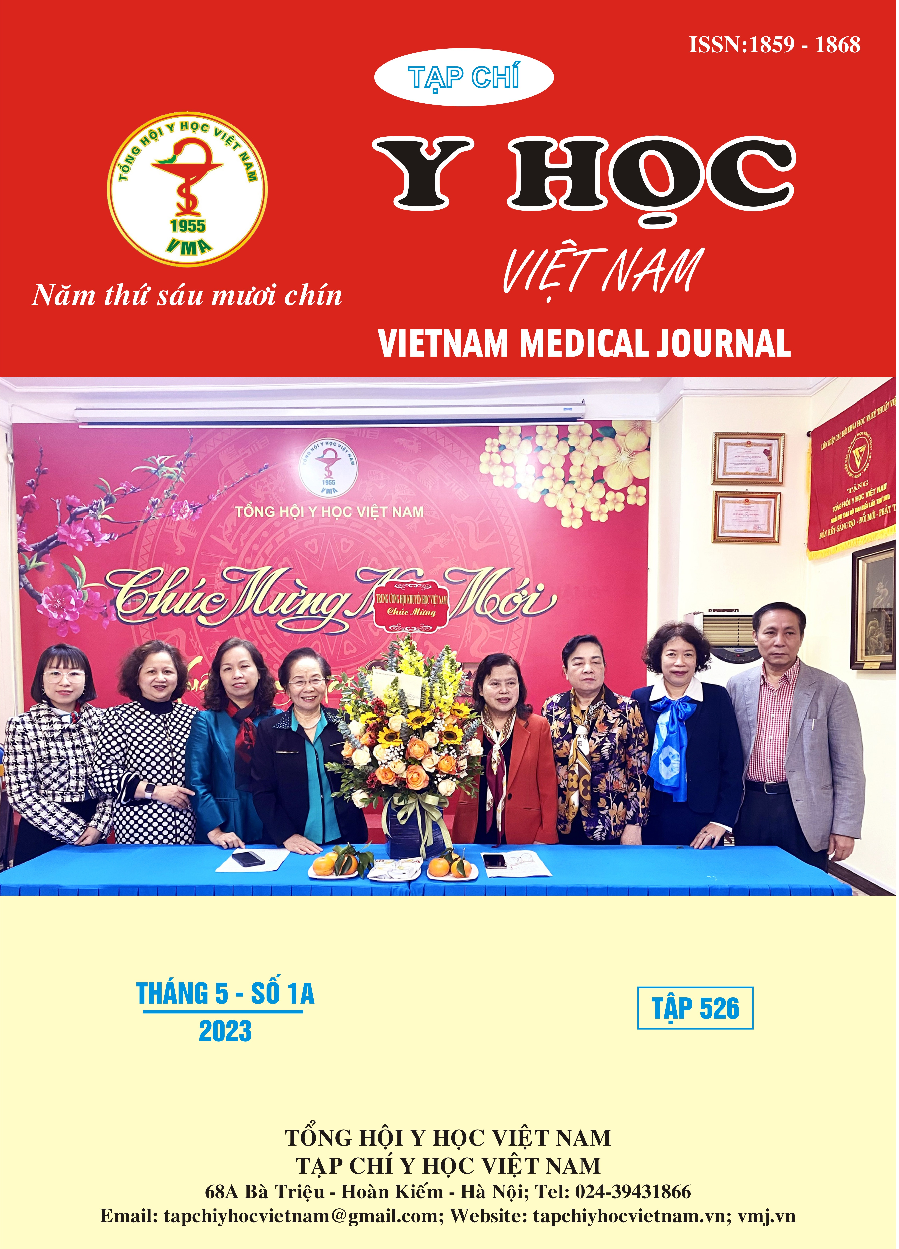ASSESSMENT OF THE OSTIOMEATAL COMPLEX ON NASAL CT SCAN IMAGE OF CHRONIC RHINOSINUSITIS PATIENTS AT NGUYEN TRI PHUONG HOSPITAL FROM 09/2020 TO 08/2022
Main Article Content
Abstract
Background: Chronic rhinosinusitis is a common disease. Obstruction of the ostiomeatal complex play an important role in the pathogenesis of chronic rhinosinusitis. In this study, we investigated the characteristics of the ostiomeatal complex through CT Scan – an effective and common diagnostic tool. Objectives: To evaluate the phenotypic characteristic and anatomical variation of ostiomeatal complex in patients with chronic rhinosinusitis. Methods: A cross sectional study on 198 patients with chronic rhinosinusitis. Results: Evaluated 198 patients (396 ostiomeatal complexs) according to Earwaker’s classification, type 1 phenotype accounted for the highest rate of 49,5%; type 2 accounted for 29,5%; type 3 accounted for 5,3%; type 4 accounted for 7,6%; type 5 accounted for 7,1% and type 6 accounted for 1%. There was a relationship between phenotypes and anterior ethmoid sinusitis (p < 0,05). Anatomical variants of the ostiomeatal complex were found in 95,9% of cases in this study; the majority of patients presented with 2 anatomical variants (42,4%). Most of the anatomical variants included: Agger nasi cell (92,4%); middle turbinate pneumatization (60,1%); septal deviation (30,3%); Haller cell (21,2%), hypertrophy uncinate process (14,6%); paradoxical middle turbinate (5,1%) and uncinate process pneumatization (4,5%). There was a relationship between paradoxical middle turbinate and maxillary sinusitis (p < 0,05). Conclusions: There is an association between ostiomeatal complex phenotypes (according to Earwaker’s classification) and anterior ethmoid sinusitis. There is an association between paradoxical middle turbinate and maxillary sinusitis.
Article Details
Keywords
ostiomeatal complex, sinus CT scan, chronic rhinosinusitis
References
2. Casiano RR. Correlation of clinical examination with computer tomography in paranasal sinus disease. Am J Rhinol. 1997;11(3):193-196.
3. Earwaker J. Anatomic variants in sinonasal CT. Radiographics. 1993;13(2):381- 415.
4. Riello, Anna Patricia de Freitas Linhares, and Edson Mendes Boasquevisque. Anatomical variants of the ostiomeatal complex: tomographic findings in 200 patients. Radiologia Brasileira. 2008. 149-154.
5. Scribano E, Ascenti G, Loria G, Cascio F, Gaeta M. The role of the ostiomeatal unit anatomic variations in inflammatory disease of the maxillary sinuses. Eur J Radiol. 1997;24(3):172-174.
6. Stammberger HR, Kennedy DW; Anatomic Terminology Group. Paranasal sinuses:anatomic terminology and nomenclature. Ann Otol Rhinol Laryngol Suppl. 1995;167:7-16.


